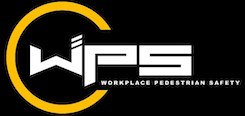Workplace accidents bear untold financial and human costs and grave situations on the warehouse floor are the ultimate nightmare of any warehouse operator. As the staple of any good and efficient warehouse operations, forklifts pose a particular risk to warehouse workers, both those who are qualified to operate them and those working around them.
In Australia, workplace accidents and fatalities have both seen a steady year-on-year decline, thanks to the country’s policy-led focus on worker safety. This extends to workplaces of all different stripes, from warehouse pedestrian barriers operations and loading docks, to office spaces, hospitals, and food preparation areas. But naturally, warehouses, factories, and construction sites, as well as mining operations, are most often the sites of workplace accidents.
Accidents involving equipment are among the most common workplace accidents. Due to their maneuverability and compact design, forklifts can easily become unstable, particularly when fully loaded, and a fully loaded standard forklift can weigh up to five tonnes. The danger to those working with and around them is obvious. But luckily, there are more ways than ever to ensure safe forklift operations for your warehouse.
One of the biggest steps you can take to protect your workers from a forklift accident is the implementation of forklift safety barriers. Forklift safety barriers buffer workers on the floor of your warehouse from the machinery itself, providing safe passages around your warehouse. However, it’s not just warehouses that can benefit from their implementation. In this quick guide, we’ll look at five different practical applications for forklift safety barriers.
1) Warehouses
This list wouldn’t be complete without first covering the importance of safety barriers in warehouses, where forklifts protection barriers can make for the cornerstone of your operations (besides your workers). A safe working environment is of the utmost importance in a warehouse operation. It not only means that your workers won’t be stricken with injury or worse, but it also ensures a more efficient, positive workplace environment. Robust, stable safety barriers made from top-grade materials should be implemented in every warehouse environment.
2) Production Areas
Regardless of the industry, production areas pose some of the biggest risks to worker safety. Production areas are often busy, with risks increasing along with the scale of the operation. They’re also filled with equipment and materials that pose hazards if not respected properly. This is why it makes sense to ensure workers are given ample buffer between themselves and hazardous areas through the use of safety barriers and railings.
3) Food Manufacturing
Food manufacturing involves a significant amount of processing and packaging work and a significant amount of materials handling as a result. Food manufacturing operations also typically involve a relatively higher number of on-the-ground employees, particularly in areas such as quality assurance. What’s more, accidents taking place in food processing areas can compound financial costs through the waste and spoilage of products and materials.
4) Hospitals
Nowhere is safety more important than in a hospital, where there are hundreds, often thousands of people coming in and out, most of whom are not being mindful of potential safety risks and many who are not fully mobile. Hospitals must take their safety regulations seriously and safety barriers can be a huge step towards ensuring that safety.




